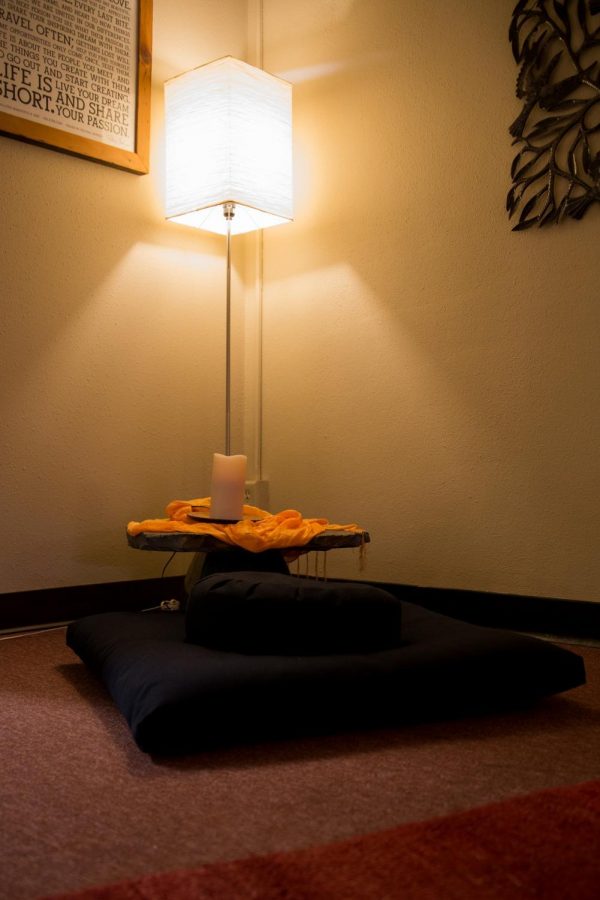Mindful Meditation groups work to combat negative mental health through guided sessions
October 23, 2017
CAPS program offers classes to beginners, advanced meditators.
Counseling and Psychological Services provides Oregon State University students a chance to take a breather and discover peace from the present moment with their Mindful Meditation groups.
OSU looks to combat negative mental health by implementing Mindful Meditation groups that meet on the 5th floor of Snell Hall in CAPS, according to the CAPS webpage. These groups are led by experienced professionals in a guided fashion to make it easy for both beginners and advanced meditators to participate.
According to Jim Gouveia, a CAPS staff counselor and a leader of the Mindful Meditation groups, there are many benefits that Mindful Meditation can offer students.
“It’s a great practice to help us not be so reactive to our thoughts, so that we don’t have the emotional or physical pain that we create for ourselves,” Gouveia said.
The goal of mindful meditation is to still one’s mind and develop an inner peace free from external and internal distractions, according to Gouveia. Originating in India around 2,000 years ago, this practice of being still and focusing on your breath has recently entered the Western world and taken off in the past 70 years. With the advent of pharmaceutical solutions to problems such as anxiety and depression, mindful meditation offers the chance to remedy these same issues in a holistic fashion, Gouveia added.
According to Dr. John Edwards, director of the school of psychological sciences, the effects of Mindful Meditation has also been researched in the medical field for its benefits in helping combat mental illnesses and physical pain.
“Meditation is well known to have effects on alleviating negative emotions, helping people manage stress and anxiety,” Edwards said. “It’s been used as a pain management technique, and that’s how it got into the psychology and medical literatures in the U.S.”
The benefits of Mindful Meditation have been scientifically researched and correlations have been made that prove the positive effects of this practice, according to Edwards.
During the Mindful Meditation process, participants sit in a quiet room atop mats and cushions facing the individual that is guiding the meditation. The instructor teaches new participants the proper way to sit and where to place their hands to comfortably proceed with the meditation. A short quote is read, then the instructor rings a singing bowl, signaling the start of the meditation. The individual guiding meditation talks participants through what to think about, what to focus on and ways to combat interfering thoughts.
Mohana Das, a graduate student in the Master of Fine Arts program, recently attended her first Mindful Meditation group. Das, who is working on her thesis dealing with childhood trauma, was referred to the meditation groups by her counselor.
According to Das, she used Mindful Meditation as a way to step out of the continuous whirl of thoughts and emotions that comes with her work.
“It was my first session and I had trouble concentrating, letting go of the general train of thoughts. But it was calming and relaxing,” Das said in an email. “I cherished the silence.”











































































































